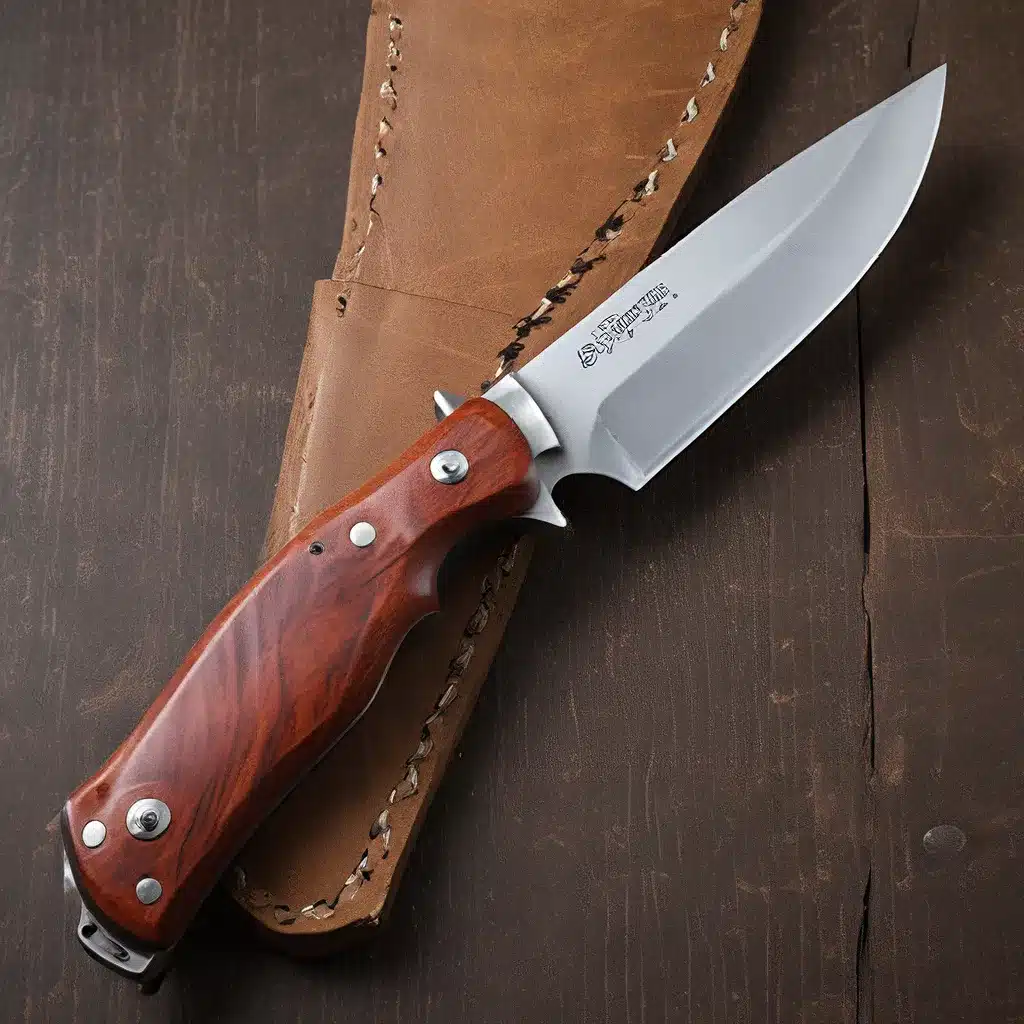
The Bowie Knife: A Legendary Blade with a Bloody Past
The Bowie knife is one of the most iconic and mysterious blades in American history. Its origins shrouded in legend, the Bowie knife has captured the imagination of knife enthusiasts and historians alike. But what’s the true story behind this legendary implement of war and wilderness?
Let’s start by debunking a common myth: the Bowie knife was not invented by legendary frontiersman Jim Bowie. In fact, the knife’s design predates Bowie by several years. The origins can be traced back to a famous 1827 duel in which Jim Bowie used a large, heavy knife to defend himself. This encounter cemented the knife’s reputation, and soon blacksmiths across the South were producing their own versions of the “Bowie knife.”
But the true story of the Bowie knife is far more complex and fascinating. According to historians, the design was likely influenced by a variety of earlier knives, including the Spanish navaja, the Argentine gaucho knife, and the French coupe-choux*. These diverse cultural influences converged to create the distinctive Bowie knife profile – a broad, clip-point blade with a sturdy, cross-guard hilt.
What’s interesting is that the Bowie knife wasn’t just a functional tool – it was also a symbol of power and status. As the legend of Jim Bowie’s dueling prowess spread, the Bowie knife became a must-have accessory for frontiersmen, soldiers, and even politicians. Owning a Bowie knife was a mark of rugged masculinity and frontier savvy.
Of course, the Bowie knife’s dark history can’t be ignored. These blades were frequently used in acts of violence, from duels to frontier skirmishes. The Alamo, in particular, cemented the Bowie knife’s reputation as a fearsome weapon of war. Historical accounts describe Davy Crockett and other Alamo defenders wielding their Bowie knives with deadly effect against the Mexican invaders.
Davy Crockett: Frontier Legend or Mythical Hero?
Speaking of Davy Crockett, the famed frontiersman is another figure shrouded in myth and legend. Was he a real-life hero who embodied the spirit of the American West, or simply a larger-than-life character created by savvy PR and popular culture?
According to biographer Michael Wallis, the truth about Davy Crockett is a bit more complicated. While Crockett was undoubtedly a skilled woodsman, hunter, and soldier, much of his legendary status was cultivated by his own self-promotion and the romanticized depictions in media of the time.
Crockett was born in Tennessee, not on a “mountaintop” as the famous song claims. And while he did wear a coonskin cap, it was more for practical purposes than as a symbol of frontier prowess. Wallis argues that Crockett adopted the iconic headgear as a way to boost his public image and stay politically relevant.
But that doesn’t mean Crockett was just a myth. He was a real person who lived an adventurous life and left a lasting impact. Wallis’ biography portrays Crockett as a complex individual – part heroic frontiersman, part savvy self-promoter. The legends that grew around him were fueled by his own larger-than-life persona, as well as the public’s appetite for tales of American ruggedness and independence.
Interestingly, Crockett’s ultimate fate at the Alamo is also shrouded in mystery. While the popular image depicts him defiantly fighting to the end, Wallis notes that the details of his death are still debated by historians. Some accounts suggest he may have surrendered and been executed, rather than dying in battle.
Separating Fact from Fiction: The Challenge of Legendary Knives and Figures
The stories of the Bowie knife and Davy Crockett illustrate a fundamental challenge in understanding the history of legendary figures and iconic implements – the line between fact and fiction can be blurry, and the myths often become intertwined with the reality.
As I explored these topics, I was struck by the way that romanticized narratives and cultural forces can shape our perception of the past. The Bowie knife, for example, became a symbol of frontier power and masculinity, even though its origins were more diverse and its use often involved violence.
Similarly, Davy Crockett’s legacy is a complex mix of truth and myth. While he was undoubtedly a skilled and adventurous individual, the larger-than-life persona that emerged was also shaped by his own self-promotion and the public’s appetite for heroic frontier tales.
As a knife enthusiast, I find this interplay between reality and legend to be endlessly fascinating. It reminds me that the history of these iconic blades and figures is not always straightforward, and that we have to approach it with a critical eye.
At the same time, I can’t help but appreciate the power of these myths and legends. They capture something essential about the American character – our love of rugged individualism, our fascination with the unknown, and our tendency to mythologize our own history. Even if the details aren’t always accurate, these stories speak to a deeper truth about the human experience.
So as I continue to explore the world of knives and the larger-than-life figures that shaped their legacy, I’ll keep an open mind. I’ll strive to separate fact from fiction, but I’ll also embrace the mystery and wonder that surrounds these enduring icons of American culture. After all, sometimes the legend is just as compelling as the reality.


